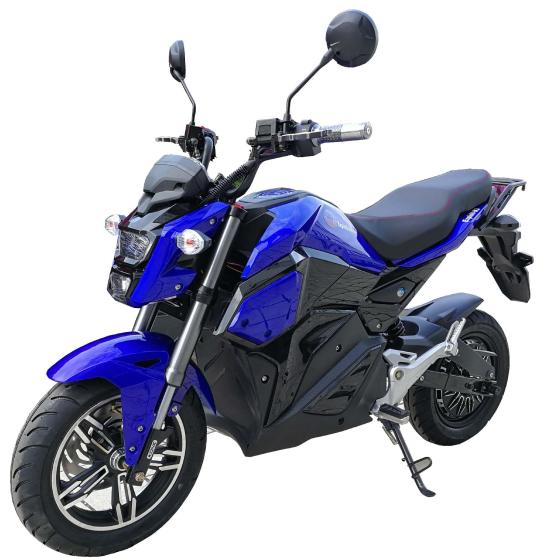#gmm 1990
Text

Mythical IG
Chocolat Poster
#mythical ig#gmm 1990#link neal#rhett mclaughlin#link sans specs#the looks on their faces are just 😗🤌#🥰🥰🥰#my edit
25 notes
·
View notes
Video
youtube
PERSES 「BOUNCE」 (ซนซน 40 ปี GMM GRAMMY) Special MV
1982年にタイ・バンコクに設立、1990年代にRS Promotionとともにタイの音楽産業を
築いた会社・GMMグラミー。その40周年を記念したプロジェクトの曲&Videoで・・・
GMMグラミー傘下のレーベル・G'NESTに所属するボーイズグループ・PERSESが、
タイのアイドルデュオらしいGOLF&MIKEが2005年に発表したヒット曲「Bounce」を・・・
youtube
กอล์ฟ & ไมค์ 「Bounce」 OFFICIAL MV
↑をリアレンジ!原曲(&MV)も、バスケのドリブルの音をリズムに利用してて面白いね!
PERSESバージョンの「BOUNCE」も、プロデューサーであるタイのポップロックバンド・
Getsunovaのメンバー・NOTH GETSUNOVAさんとかによるリアレンジで、タイの
弦楽器・ピンや太鼓・クローンヤーオ、シンバルとかの音を加えていて、ヒップホップと
モーラムをブレンドしたような曲で楽しいね。MVはGOLF&MIKEバージョンのバスケを
残しながら、振付けを新しくしたみたいですよ。メンバーをきちんと格好良く撮ってるのも
ステキだと思います!タイのリアレンジ系は、Kamikazeレーベルのクラシックだと思う
Waiiさんが2008年にリリースした曲「ตกหลุมรัก」の・・・
youtube
Waii 「ตกหลุมรัก」 Official MV
2022年にデビューしたガールズグループ・VENITAによるハウス&ジャージークラブの
アレンジも可愛くて好きでした。
youtube
VENITA 「ตกหลุมรัก」 (The Test of Time Project) Official Video Song
タイは最近、リバイバル・ブームなのかしら?それともソニックブームか、黄色いお空で
BOOM BOOM BOOMかな。
0 notes
Photo








***
352 notes
·
View notes
Photo

+++
141 notes
·
View notes
Text

Ok hands up, please. Who can hear me screaming?
78 notes
·
View notes
Text

he's heated 😌
#rhett mclaughlin#comfort bear#rhett and link#gmm#gmm 1990#good mythical morning#🦁🦊gifs#lionfoxmakes
35 notes
·
View notes
Text


The energy in this more 😘👌
#rhett and link#link neal#randl#rhett mclaughlin#good mythical morning#good mythical more#gmm 1990#gmmore 1990#chocolat#rhett teasing link#innuendo#rhett looking at the monitor
42 notes
·
View notes
Text


He has the most kissable lips”
26 notes
·
View notes
Text

I just really like both their expressions in this.
#link neal#rhett mclaughlin#gmm#rhett and link#good mythical morning#rhett & link#gmmore#gmmmore 1990#screenshot
27 notes
·
View notes
Text
35mm Memories
read it on the AO3 at https://ift.tt/2rpz3xq
by archionblu
It was true that when they were sixteen, Rhett and Link thought it’d be great to do an art shoot with a bright yellow plastic flower and the remaining photos on one of Link’s disposable cameras.
What they hadn’t revealed to the Beasts, and what Link refused to even acknowledge, was that there was a second roll of film.
Words: 2345, Chapters: 1/1, Language: English
Fandoms: Rhett & Link
Rating: Teen And Up Audiences
Warnings: Underage
Categories: M/M
Relationships: Rhett McLaughlin/Link Neal
Additional Tags: Angst, Pining, High School, highschool rhink, First Kiss, Photography, 1990s, Ambiguous/Open Ending, Episode Related, GMM # 98: Embarrassing Teen Photos, Implied Sexual Content
read it on the AO3 at https://ift.tt/2rpz3xq
4 notes
·
View notes
Text
Alternative Fuel

PROJECT TITLE: C.N.G. Green 2008
CNG Motor to promote environmental protection and energy conservation Today, countries are exploring the development and use of clean energy. Singaporean researchers recently developed a new type of hydrogen fuel motorcycle. See it here Bike Price in Bangladesh
We propose a variety of activities, but our main propose is to deliver the CNG & Hydrogen technology for motorcycles ( Bikes & Tricycles ). We are targeting the Asia market, retail and Hybrid conversion as currently over 140 millions motorcycles are registered in Asia alone by grow rate of 5% to10% annually.
Myanmar 118,380. Thailand 18,210,454. Mongolia 26,675. Indonesia 17,002,140. Bangladesh 231,795. Malaysia 5,082,473. China 31,619,158. Philippines 1,032,594. Taiwan 12,900,000. Vietnam 11,379,000. Singapore 133,358. Cambodia 426,571. Hong Kong 33,079. Pakistan 1,987,074. Korea 1,730,193. Sri Lanka 751,938. Japan 13,996,275. India 24,691,876. Laos 132,552. East Timor 23,816.
TOTAL Millions 140,010,091
PROJECT DETAIL: TOTAL 6 PROJECTS / OVERVIEW, WHITEPAPER, METHOD, BUDGET
CNG Mobile Container, CNG Mobile Storage, Transport, Supply, Multi purpose.. Annex 5
CNG Cargo Vessels, CNG Ships may run on CNG drawn from their own cargo dual purpose A 3
CNG Mobile Refueling Stations, CNG Mobility to a larger scale with low cost Platform..Annex 2
CNG Motorcycle and Scooter, New generation of CNG Motorcycle Dual-Fuel.. Annex 1
CNG Marine Power, CNG alternative fuel in marine engine applications.. Annex 4
CNG at Home, Home refueling Appliance for Compressed Natural Gas.. Annex 6
PROJECT COORDINATORS: SHANGHAI WAN BAN INFORMATION TECHNOLOGY LTD.
Natural Gas- Sustainable Energy
Our core business is Smart Systems and Components for Sustainable Energy and Natural/Biogas, development until service and maintenance. Our own Technologies, state of the art. The CNG Motorcycle, CNG Motor, CNG refueling at home, CNG Cargo Container and priority Manifolds. Transfer technology for natural gas applications. Development center for components and systems, natural Gas and Biogas applications; priority CNG motorcycle (Convert and Retail) CNG stations manifolds, dryers, filters, connectors and more. Pressure and Flow solutions, components, systems and manifolds. Mechnical and electronic system solutions
Abstract
Compressed Natural Gas (CNG) marine transportation is poised to be a viable solution to bring natural gas supplies to new markets or provide a solution for monetizing stranded gas. This is being driven in large part by high liquid fuel energy prices. CNG marine transport has a market niche between the volumes and distances that pipelines and LNG can economically transport. CNG Corporation's Gas Mobility Module (GMM)1 a lightweight pressure containership vessel, has been developed to specifically address this market. CNG marine transportation in large volumes is not presently utilized anywhere in the world, though bulk transport by truck is well proven. Due to the reluctance by many parties to be the 'first mover', CNG Corporation has embarked on the development of a small, simple compression loaded barge based CNG marine transport project that will provide a demonstration platform for the GMM technology. The small size and resulting minimal capital outlay will provide a much needed working commercial scale model while minimizing the risks and financing problems associated with many proposed large scale projects.This paper will present details of the project, its development timetable and address the development process necessary to make CNG marine transportation a viable reality.
Introduction
CNG transport is not new nor are the technologies being introduced to CNG transport, but what is new is the application of these technologies into a CNG marine based system and the increased volumes of CNG proposed to be transported. CNG Corp's Gas Mobility Module (GMM) technology is well positioned to become the CNG transport market leader due to the competitive advantage of the lightweight GMM, commercial availability of the GMM product, CNG Shipping, CNG Supply, CNG Storage, CNG Retail Station and the proposal for mobility module of cng conversion for motor cars and motorcycles.
Natural gas Sources
Indonesia has almost 190 trillion cubic feet (TCF) of natural gas reserves (proven and probable), the thirteenth largest in the world. In 2004, the country produced 3.03 trillion cubic feet (TCF) of gas, ranking eighth in world gas production. Gas reserves are equivalent to almost four times Indonesia's oil reserves and can supply the country for 62 years at current production rates. According to the analysis, over 71 percent of natural gas reserves are located offshore, with the largest reserves found off Natuna Island (28.8 percent), East Kalimantan (25.2 percent), South Sumatra (13 percent) and Irian Jaya (12.8 percent). However, not all of these reserves are commercially viable, due to both the quality of the gas and the distance to market.
Growing Power Needs Will Drive Gas Demand
Power generation needs in Java and Bali will also drive growing domestic gas demand. Over the last several years, peak power demand grew by an average of six percent annually, while power capacity did not increase. Peak loads on the Java-Bali grid (which accounts for of 80 percent of Indonesia's power demand) reached a record high of 14,821 MW in April 2005. As a result, the actual reserve margin has declined from 16 percent in 2001 to a razor-thin 6 percent in 2004 in (Note: desired reserve margins are normally between 25 and 30 percent). PLN estimates that Indonesia needs over 23,000 MW in new capacity between 2005 and 2015 to prevent a long-term power crisis and restore its power reserve margin. Much of that new capacity will be fueled by gas and coal. PLN plans to raise natural gas use by the power sector from 17 percent in 2004 to 40 percent by 2015.
Networks, state gas utility CNG Corps plans four new transmission projects to meet rising power sector demands for gas, as follows:
In addition to these projects, the CNGC is proposing to build an CNG exprot terminal in West Java, to process and distribute gas from existing CNG plants, as well as future plants in Papua (Tangguh) and South Sulawesi (Donggi). CNGC is extending its distribution network and plans to ship compressed natural gas (CNG) over short to medium distances to remote areas. In addition, CNGC is also investigating the feasibility of developing an integrated mini-CNG transportation system. The project will involve a mini-CNG receiving terminal in Singapore.
RECENT ENERGY TRENDS AND ENERGY POLICY
Singapore's primary energy consumption increased from 35.0 Mtoe in 2000 to 44.1 Mtoe in 2004, primarily from oil and gas spurred by the resilient growth in the industry and transport sectors. The energy mix has seen a major shift in recent years. As a result of switching from oil to natural gas in electricity generation, Singapore has dramatically increased the consumption of natural gas since 2001 when the economy started importing natural gas from Indonesia. From 2000, the share of natural gas in primary energy consumption increased from 5 percent to 20 percent. By contrast, the share of oil in total primary energy consumption decreased from 95 percent to 80 percent over the same period. Not having its own energy resources, Singapore relies entirely on imported oil and gas to meet the economy's growing energy requirements. More than half of Singapore's oil import was re-exported, while the other half was retained for domestic use. Singapore is the third largest refining centre in the world after the US Gulf Coast, and Rotterdam, and the primary refined products trading hub in Southeast Asia. Singapore also serves as the world's top bunkering port due to the economy's strategic location at the entrance to the Strait of Malacca.
To ensure supply security, Singapore is seeking to diversify natural gas supply sources. The economy has undertaken a study to investigate the feasibility of importing compressed natural gas (CNG) and the construction of CNG receiving terminal. Most of the industrial activities in Singapore - refining and petrochemicals - use oil as the feedstock and are fairly carbon intensive. Therefore, as a means to minimize the burden to the environment resulting from the utilization of oil, Singapore has recently initiated the "Singapore Green Plan 2012", which anticipates reducing CO2 emissions by at least 25 percent of the 1990 level by 2012. The Plan outlines strategies to achieve the target through greater energy efficiency improvement, use of cleaner energy sources in the industry, commercial, and transport sectors. Some of the measures adopted include: 1) voluntary energy-efficiency labeling for appliances and buildings, 2) fuel switching in electricity generation, and 3) introduction of "green vehicles" (such as hybrid, and CNG).
Transport
Given the small land area (650 km2) and high population density (at 6,425 persons/km2 ), Singapore has been developing a comprehensive road transport system that can efficiently handle both freight and passenger transport. In particular, Singapore has been striving to reduce dependence on passenger vehicle and encourage the use of public transport. With the implementation of various economic instruments such as mandatory acquisition of a certificate for passenger vehicle ownership, and electronic road pricing on congested roads, Singapore has successfully slowed the growth in the number of passenger vehicles and consequently gasoline consumption. Over the outlook period, energy demand for road transport sub-sector is expected to grow at an annual rate of 2.2 percent. Gasoline demand for passenger vehicles will grow by 1.8 percent annually, a slower rate than the previous three decades at 3.8 percent per year. As a result of the implementation of various economic instruments which limit passenger vehicle ownership, the number of vehicles per 1,000 populations will not show any significant change from the 2002 level, remaining at around 102 per 1,000 populations.
Diesel demand for trucks is projected to grow annually at the steady rate of 2.4 percent since trucks are favored as the main mode of freight transport for high value added manufacturing and petrochemical products. Singapore's Changi international airport serves as a regional air transport hub and ranks as the second largest in Asia in terms of passenger handling capacity. In anticipation of the increasing number of passengers and volume of freight air transport, Singapore has been continuously upgrading airport facilities and promoting bilateral agreements with neighboring economies on "open sky" initiatives that will facilitate the free flow of passengers and freight transport. As a result, the demand for jet kerosene, the primary fuel for air transport, is projected to grow robustly, more than doubling from 2.9 Mtoe in 2002 to 6.2 Mtoe in 2030. 99 The amount of energy needed to produce a dollar's worth of industrial sector's value added 100 Between 1980 and 2002, energy intensity in Singapore's industrial sector increased at an annual average rate of 5.9 percent as a result of drastic expansion of petrochemical industries.
1 note
·
View note
Text

I just don't like the idea of, like, licking my fingers.
O rly? 🤨









A finger lickin', thumb suckin' liar. 😜
GMM2058
Testing Popular Food Brand Claims
#gmm#gmm 2058#link neal#link avec specs#link sans specs#ocean blues#finger lickin' good#these are just in the past 3 months#i could go on... 😏#😜😜😜#gmm 1979#gmm 1990#gmm 2016#gmm 2024#gmm 2033#gmm live 2021#my edit
88 notes
·
View notes
Text
Data Management & Visualisation - Assignment 1
Research topic: The effect of a country’s Policy type on income level
I have chosen to analyze the economic and financial status of a population measured by income per person to the type of government policy in a country measured by polity score. This is to help understand how the political systems practiced especially in the developing countries determine the income level of the citizenry.
Variables:
Y1 = incomeperperson
Y2 = polityscore
Data Set:


Source: Gapminder Codebook
Research Questions:
Is there a relationship between a country’s policy type and the income level?
What type of relationship if there is any, exist between a country’s policy type and the income level?
Hypothesis Statement:
H0: there is no relationship between Policy type and income level
H1: There is a relationship between Policy type and income level
Literature Review
According to Londregan and Poole(1996), The observation that authoritarian rule is prevalent among low-income countries, while democracy is more commonly found among wealthy countries, raises important questions about the causal relationship between regime type and income. One interpretation of this regularity is suggested by Einstein’s pithy remark that “an empty stomach makes a poor political advisor”. From this viewpoint, democracy is simply an entailment of a high level of social and economic development. Others suggest to the contrary that the regularity does not reflect an underlying causal link.
They point on the one hand to the ability of some low-income countries, such as India, to sustain democracy, albeit in aa flawed vision and on the other hand to the resistance of the oil rich monarchies of the Arabian Peninsula to liberalizing constitutional reforms. According to this perspective, democratic political culture depends on the institutional and historical context than on the level of economic development.
To assess the importance of political institutions on economic growth Pereira and Teles (2010) developed an econometric model (a system GMM estimator with an autoregressive distributed lags) using yearly data in a large sample of 109 countries covering a maximum time span from 1975 to 2004. The key dependent variable is GDP per capita.
They took into account several political institutions as explanatory variables such as electoral rules (plurality rule vs. proportional representation—open and closed lists—and district magnitude); form of government (parliamentary vs. presidential systems); political regime (dictatorship vs. democracy measured in terms of years under democracy); government fractionalization; size of the executive’s political party or coalition in Congress (number of seats held by the executive’s party or coalition); federalism and robustness of federal structure (degree to which states/provinces have authority over taxing, spending or regulating); and years that the same elite group is in office or government durability.
They concluded that the adoption of a democratic regime positively affects economic growth once it is controlled by the variables that measure political institutions. As expected, in rich countries, the effects of political institutions on growth are small or negligible as opposed to poor countries. These findings support the results for “old democracies” since there is a strong correlation between income and democracy.
In addition, the results show that the effects of political institutional variables are different for autocracies and democracies. In democratic regimes, the longer political power is held by a particular political leader, the greater economic growth will be; however, when dealing with autocracies such effect is reversed. Political polarization also has an opposing effect under democratic and authoritarian regimes. While this variable does not help authoritarian governments to achieve good economic performance, it does provide a positive impact on democratic governments.
Given that political institution variables often suggest a certain degree of political rights, the results suggest that even autocratic regimes can have a satisfactory economic performance as long as some political rights are granted to society.
It also might suggest that political institutions work as a substitute for democracy in authoritarian regime, generating economic growth. In other words, autocracies can differentiate from one another in terms of political institutions. That corroborates the claim of Przeworski et al. (2000), who have not found considerable differences between the economic growth as a function of political regime, either in democracies or autocracies.
References:
John B. Londregan and Keith T. Poole, “Does High Income Promote Democracy” World Politics Vol. 49, No. 1 (Oct., 1996), pp. 1-30 (30 pages) Published by: Cambridge University Press.
Pereira, C. and Teles, V. (2010) “Political Institutions and Substitute for Democracy: A Political Economy Analysis of Economic Growth” Manuscript presented at the Annual Conference of the European Economic Association.
Przeworski, A.; Alvarez, M.; Cheibub, J. A.; and Limongi, F. (2000) Democracy and Development: Political Institutions and Well-Being in the World, 1950-1990. New York: Cambridge University Press.
1 note
·
View note
Photo






***
134 notes
·
View notes
Photo


+++
113 notes
·
View notes
Text
Cute Wars

Comfort Bear Rhett vs Pigtail Rhett

#rhett mclaughlin#link neal#rhett and link#gmm#good mythical morning#gmm 1982#gmm 1990#mythical society#behind the scenes photos#initiate preview#🦁🦊opines
20 notes
·
View notes